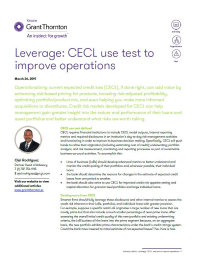-
Financial statements audits
Financial statement audits
-
Compliance audits
Compliance audits
-
Compilations and reviews
Compilations and audit
-
Agreed-upon procedures
Agreed-upon procedures
-
Corporate and business tax
Our trusted teams can prepare corporate tax files and ruling requests, support you with deferrals, accounting procedures and legitimate tax benefits.
-
International tax
Our teams have in-depth knowledge of the relationship between domestic and international tax laws.
-
Tax compliance
Business Tax
-
Individual taxes
Individual taxes
-
Estate and succession planning
Estate and succession planning
-
Global mobility services
Through our global organisation of member firms, we support both companies and individuals, providing insightful solutions to minimise the tax burden for both parties.
-
Sales and use tax and indirect taxes
SUT/ VAT & indirect taxes
-
Tax incentives program
Tax incentives program
-
Transfer Pricing Study
The laws surrounding transfer pricing are becoming ever more complex, as tax affairs of multinational companies are facing scrutiny from media, regulators and the public
-
Business consulting
Our business consulting services can help you improve your operational performance and productivity, adding value throughout your growth life cycle.
-
Forensic and investigative services
At Grant Thornton, we have a wealth of knowledge in forensic services and can support you with issues such as dispute resolution, fraud and insurance claims.
-
Fraud and investigations
The commercial landscape is changing fast. An ever more regulated environment means organizations today must adopt stringent governance and compliance processes. As business has become global, organizations need to adapt to deal with multi-jurisdictional investigations, litigation, and dispute resolution, address the threat of cyber-attack and at the same time protect the organization’s value.
-
Dispute resolutions
Our independent experts are experienced in advising on civil and criminal matters involving contract breaches, partnership disputes, auditor negligence, shareholder disputes and company valuations, disputes for corporates, the public sector and individuals. We act in all forms of dispute resolution, including litigation, arbitration, and mediation.
-
Business risk services
We can help you identify, understand and manage potential risks to safeguard your business and comply with regulatory requirements.
-
Internal audit
We work with our clients to assess their corporate level risk, identify areas of greatest risk and develop appropriate work plans and audit programs to mitigate these risks.
-
Service organization reports
As a service organization, you know how important it is to produce a report for your customers and their auditors that instills confidence and enhances their trust in your services. Grant Thornton Advisory professionals can help you determine which report(s) will satisfy your customers’ needs and provide relevant information to your customers and customers’ auditors that will be a business benefit to you.
-
Transaction advisory services
Transactions are significant events in the life of a business – a successful deal that can have a lasting impact on the future shape of the organizations involved. Because the stakes are high for both buyers and sellers, experience, determination and pragmatism are required to bring deals safely through to conclusion.
-
Mergers and acquisitions
Globalization and company growth ambitions are driving an increase in M&A activity worldwide as businesses look to establish a footprint in countries beyond their own. Even within their own regions, many businesses feel the pressure to acquire in order to establish a strategic presence in new markets, such as those being created by rapid technological innovation.
-
Valuations
We can support you throughout the transaction process – helping achieve the best possible outcome at the point of the transaction and in the longer term.
-
Recovery and reorganization
We provide a wide range of services to recovery and reorganisation professionals, companies and their stakeholders.
Operationalizing current expected credit loss (CECL), if done right, can add value by enhancing risk-based pricing for products, boosting risk-adjusted profitability, optimizing portfolio/product mix, and even helping you make more informed acquisitions or divestitures. Credit risk models developed for CECL can help management gain greater insight into the nature and performance of their loans and asset portfolios and better understand what risks are worth taking.
CECL use test defined
CECL requires financial institutions to include CECL model outputs, internal reporting metrics and required disclosures in an institution’s day-to-day risk management activities and functioning in order to improve its business decision making. Specifically, CECL will push banks to refine their origination (including estimating cost of credit); underwriting; portfolio analysis; and risk measurement, monitoring and reporting processes as part of sustainable business-as-usual activities. To accomplish this:
• Lines of business (LoBs) should develop advanced metrics to better understand and monitor the credit quality of their portfolios and, whenever possible, their individual loans.
• the bank should determine the reasons for changes in the estimate of expected credit losses from one period to another.
• the bank should also strive to use CECL for improved credit risk appetite setting and capital allocation for granular level portfolios and large individual loans.
Getting more from CECL
Smarter firms should fully leverage these disclosures and other internal metrics to assess the credit risk inherent in their LoBs, portfolios, and individual loans with greater precision.
For example, suppose a specific retail LoB originates a large number of new loans that are mostly prime but that also include a much smaller percentage of near-prime loans. After assessing the overall initial credit quality of this new portfolio and existing underwriting criteria, the LoB buckets all the loans into the prime segment because, on an aggregate basis, the new portfolio exhibits prime characteristics under the bank’s credit ratings system. Could the bank have lowered its initial estimate of net expected losses? Yes. Here is how.
Go beyond checking the box to drive informed business decisions
The bank should have split the larger portfolio into two risk pools: prime and near-prime. The loans should have been priced in accordance with individual customer’s respective risk profiles, with higher prices for the near-prime customers.
The bank could mitigate future losses by capturing data at a granular level. It could spend more time to scrutinize the following information, which is embedded within the required CECL disclosures:
- reasons for impairments (pricing was not risk-based)
- the number of positions that are in an unrealized loss position (loan counts and proportion of loans in prime vs. non-prime segments)
- the severity and duration of the impairments (for each segment)
The bottom line? Don’t look at CECL as simply a compliance exercise. Leverage risk and performance insights to inform strategy, lending and pricing decisions to improve your results. Our integrated CECL approach can help address your full range of CECL concerns.
Leverage CECL use test to improve operations


